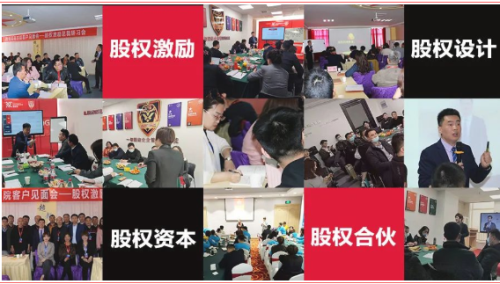(1)67%和33%:絕對控制權(quán)
(1) 67% and 33%: absolute control
山東頂層架構(gòu)設(shè)計公司提示,,針對有限責(zé)任公司,《公司法》中規(guī)定了七種情形需要“經(jīng)代表三分之二以上表決權(quán)的股東通過”才能生效,,包括:增資、減資,、合并,、分立、解散,、變更公司組織形式,、修改章程等。
Shandong Top Architecture Design Company reminds that for limited liability companies, the Company Law stipulates seven situations that require the approval of shareholders representing two-thirds or more of the voting rights to take effect, including: capital increase, capital reduction, merger, division, dissolution, change of company organizational form, modification of articles of association, etc.
除了這七種法定情形外,,投資人之間也可以約定其他經(jīng)213以上表決權(quán)通過的事項,。所以,,如果股東單獨或者聯(lián)合起來持股67%以上,那么就在這些事項的決策中擁有絕對的話語權(quán),,這是一種積極的控制權(quán),、絕對控制權(quán)。持股3%以下的股東理論上只是財務(wù)投資者了,,在公司治理中已經(jīng)喪失話語權(quán),。
In addition to these seven legal situations, investors can also agree on other matters that have been approved with more than 213 voting rights. So, if shareholders individually or jointly hold more than 67% of the shares, they have absolute say in the decision-making of these matters, which is a positive and absolute control right. Shareholders holding less than 3% of shares are theoretically only financial investors and have lost their voice in corporate governance.
(2)51%和49%:相對控制權(quán)
(2) 51% and 49%: relative control
持股519%以上67%以下的股東,擁有的是一種相對控制權(quán),,也是積極的控制權(quán),。《公司法》中規(guī)定除了前述七種情況需要2/3以上通過外,,其他事項一般都是過半數(shù)通過即可生效,。這意味著只要股東單獨或者聯(lián)合起來持股51%以上,就可以在這些事項中擁有控制權(quán),。
Shareholders holding more than 519% but less than 67% of the shares have a relative control and active control. According to the Company Law, except for the seven situations mentioned above that require more than two-thirds approval, other matters generally take effect after being approved by a majority. This means that as long as shareholders individually or jointly hold more than 51% of the shares, they can have control over these matters.

不過,,這是一個簡單的控制標(biāo)準(zhǔn),如果公司有后續(xù)增發(fā)融資,,該比例很容易被突破,,這種情況下,大股東聯(lián)合其他原股東保持控制權(quán)就顯得很重要,。在這種股權(quán)架構(gòu)中,,持股49%以下的股東雖然不能行使積極的控制權(quán),但仍然有消極的控制權(quán)(即否決權(quán))(3)34%和66%:消極控制權(quán)
However, this is a simple control standard, and if the company has subsequent additional financing, this ratio is easily breached. In this case, it is important for the major shareholders to maintain control in conjunction with other original shareholders. In this equity structure, although shareholders holding less than 49% cannot exercise active control, they still have negative control (i.e. veto power) (3) 34% and 66%: negative control
持股34%的股東,,雖然不能單獨就公司重要事項作出決策,,但是可以就某些事項進(jìn)行否決,通過行使否決權(quán)而在一定程度上起到消極控制公司的效果,,即所謂的“成事不足,、敗事有余”。持股66%6的股東雖然不能絕對地控制公司,,但仍然達(dá)到51%以上,,可以行使相對控制權(quán)。
Shareholders holding 34% of the shares, although unable to make decisions on important matters of the company alone, can veto certain matters and exercise the veto power to a certain extent, achieving a negative control effect on the company, which is known as "insufficient success and excessive failure". Although shareholders holding 66% of the shares cannot absolutely control the company, they still reach over 51% and can exercise relative control.
(4)30%:上市公司的臨界控制權(quán)
(4) 30%: Critical Control of Listed Companies
根據(jù)《上市公司收購管理辦法》,,如果投資人可以實際支配上市公司股份的表決權(quán)超過30%,,就會被認(rèn)定為擁有對上市公司的控制權(quán),這也是擁有控制權(quán)的低比例要求,。
According to the "Management Measures for the Acquisition of Listed Companies", if investors can actually control more than 30% of the voting rights of the shares of the listed company, they will be deemed to have control over the listed company, which is also a low proportion requirement for having control.
(5)寄生型數(shù)字:依附控制權(quán)
(5) Parasitic Numbers: Dependent Control
這類數(shù)字是不固定的,,一般是指單獨持股比例很小,但是一旦依附于某個股東立即可形成控制權(quán),,并且依附于哪個股東,,該被依附股東就會擁有控制權(quán),。
This type of number is not fixed, generally referring to a small proportion of individual shareholding, but once it is attached to a certain shareholder, it can immediately form control, and the dependent shareholder will have control.
比如,在9%,。49%:2%的股權(quán)架構(gòu)中,,持脫2%的膠東可以自由決定與哪個股東結(jié)合投票,而且一旦結(jié)合就會賦予該股東以控制權(quán)(達(dá)到51%),,這種情況下公司的控制權(quán)定程度上可以認(rèn)為掌握在2%的股東手中,。
For example, at 9%. 49%: In the 2% equity structure, Jiaodong, which holds 2% off, can freely decide which shareholder to vote with, and once combined, it will give the shareholder control (up to 51%). In this case, the company's control can be considered to be held by the 2% shareholder to some extent.
其他比如在57%:33%:10%的股權(quán)架構(gòu)中,持股10%的股東也具有類似效果,。數(shù)字結(jié)構(gòu)可以有很多種組合,,原理是一樣的。
For example, in a 57%: 33%: 10% equity structure, shareholders holding 10% have a similar effect. There are many combinations of digital structures, and the principle is the same.
應(yīng)當(dāng)注意的是,,在股權(quán)架構(gòu)設(shè)計中一定要避免均衡型的持股結(jié)構(gòu)(比如50%:50%,、25%:25%:25%:25%等),這種結(jié)構(gòu)的大弊端在于,,一旦股東之間發(fā)生矛盾,,大家勢均力敵,很容易導(dǎo)致股東會不能做出決策并形成公司僵局,,給經(jīng)營管理和業(yè)務(wù)發(fā)展帶來重大不利影響,。
It should be noted that in the design of the equity structure, it is necessary to avoid a balanced shareholding structure (such as 50%: 50%, 25%: 25%: 25%, etc.). The major drawback of this structure is that once conflicts arise between shareholders, everyone is evenly matched, which can easily lead to the inability of the shareholders' meeting to make decisions and form a company deadlock, bringing significant adverse effects to business management and development.
股權(quán)架構(gòu)中影響控制權(quán)的幾個重要數(shù)字相關(guān)的內(nèi)容就講解到這里了,您對此有怎樣的疑惑或者需求,,就來我們網(wǎng)站
http://zyvd.cn咨詢吧,!
That's all for the content on several important numbers that affect control in the equity structure. If you have any doubts or needs about this, please come to our website http://zyvd.cn Consult!



 13698613138
13698613138


